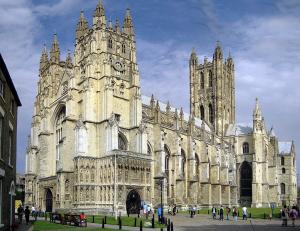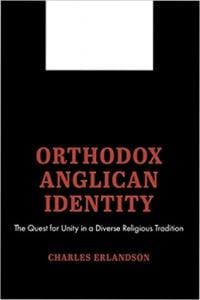Eschatological and Ecumenical Hope
This post if from the Conclusion to my book Orthodox Anglican Identity, which may be purchased here:
I began my book by quoting Dickens’ A Tale of Two Cities. So far, it may seem as if I’ve forcefully presented only “the worst of times” face of Dickens’ introduction. Where, in my analysis of orthodox Anglicanism, are the elusive best of times? If I’ve been quick to portray difficulties, I want to be just as quick to express hope. I’m sure many will be troubled by the complex, fragmented, and contentious nature of orthodox Anglicanism: I know I was. When I began my work on orthodox Anglicanism, I experienced a year of grieving for the Anglicanism I hoped would be, the one I had read about and which could easily be defined. But then a bold spirit of encouragement seized me, and I had the epiphany that there was no Golden Age of the church and that what orthodox Anglicanism looked like in the twenty-first century was what the church had always looked like in all places and in all times! Furthermore, the fact that orthodox Anglican identity is messier, more ambiguous, and less definable than desired does not mean that an authentic Anglican identity is an impossible or fatuous thing. Religious identities are inherently complex and ambiguous, while also being livable and essential realities.
Jesus Christ prayed: “I do not pray for these alone, but also for those who will believe in Me through their word; that they all may be one, as You, Father, are in Me, and I in You; that they also may be one in Us, that the world may believe that You sent Me,” (John 17:20-21). That is the orthodox Anglican hope because it is the Christian hope.
Christian and Anglican unity implies, like marriage, a unity that emerges through diversity and which can only be accomplished by the love of God, which loves the other as himself. The disputes and diversities of orthodox Anglicans may be seen, then, as marriage spats, even if the actions of TEC and others may, ultimately lead to divorce. While the diversity within orthodox Anglicanism is great, so is the commitment to walk together in love and unity. GAFCON and the ACNA are hopeful signs of Christian and Anglican unity. Despite the difficulties and differences, GAFCON and the ACNA are committed to walking together as orthodox Christians. Although the convergence of different spiritualities and even norms is fragile, one cannot attend either GAFCON or ACNA events and not experience a palpable unity and good will.
Whether these are enough to bind orthodox Anglicans together in the future remains to be seen. At some point in time, for example, the issue of women’s ordination in the ACNA will have to be decided, and this will test whether the ACNA or any church so conceived and so dedicated, can long endure. But hopefully, this book is a starting point for the ecclesial spouses to know who it is they have married. Hopefully, the members of GAFCON, the ACNA, and others will not experience the embarrassing shock of Jacob, who, although he had agreed to marry Rachel, in the morning discovered that “Behold: It was Leah!” It may be that the new orthodox Anglicanism, most exemplified by GAFCON and the ACNA but certainly not limited to them, is the new wineskin into which God is pouring the new wine of Anglican identity in the postmodern world.
Anglicanism is a microcosm of the entire Christian church and has often been the most ecumenical of churches. Its inherent identity, derived from both Catholic and Protestant principles, and from the kind of ecclesial comprehension manifested most formatively by the Elizabethan Settlement, allows it to look to the one, catholic church as a whole, and to extend Christian communion to Roman Catholics, Orthodox Christians, and Protestants alike. The kind of diversity manifested in orthodox Anglicanism is a microcosm of the kind of diversity that is true for the one, catholic church. Both the brokenness and the hopefulness of the orthodox Anglican identity, therefore, has the ability to illuminate the struggles with identity caused by the interplay between unity and diversity that is replicated on a grander scale by the church as a whole, as well as by other Christian ecclesial bodies. It is not only Anglicanism that is diverse, messy, and divided but the entire catholic church. But perhaps out of this hybrid Anglican identity may come a new way of imagining Christian unity, one that compels us to look both beyond and before the Constantinianism in which ecclesial unity is compelled by the state and is imagined in terms of national identities.









